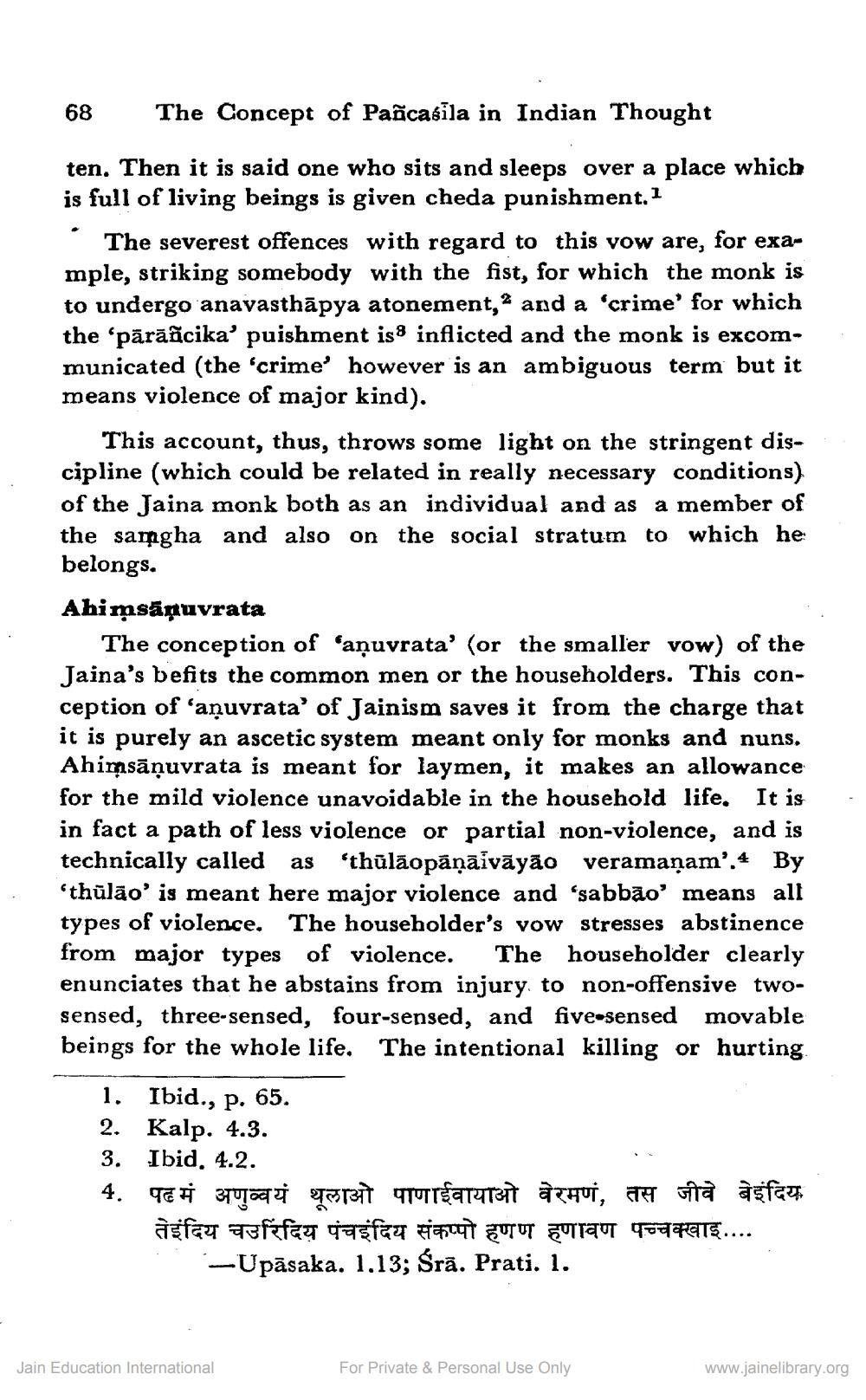________________
68
The Concept of Pañcasila in Indian Thought
ten. Then it is said one who sits and sleeps over a place which is full of living beings is given cheda punishment. 1 . The severest offences with regard to this vow are, for example, striking somebody with the fist, for which the monk is to undergo anavasthāpya atonement,” and a 'crime' for which the 'pārāñcika' puishment is inflicted and the monk is excommunicated (the 'crime' however is an ambiguous term but it means violence of major kind).
This account, thus, throws some light on the stringent discipline (which could be related in really necessary conditions) of the Jaina monk both as an individual and as a member of the samngha and also on the social stratum to which he belongs. Abiņsāpuvrata
The conception of ‘aņuvrata' (or the smaller vow) of the Jaina's befits the common men or the householders. This conception of 'anuvrata' of Jainism saves it from the charge that it is purely an ascetic system meant only for monks and nuns. Ahimsāņuvrata is meant for laymen, it makes an allowance for the mild violence unavoidable in the household life. It is in fact a path of less violence or partial non-violence, and is technically called as 'thūlāopāņāīvāyāo veramaṇam'.4 By 'thūlāo' is meant here major violence and ‘sabbão' means all types of violence. The householder's vow stresses abstinence from major types of violence. The householder clearly enunciates that he abstains from injury. to non-offensive twosensed, three-sensed, four-sensed, and five-sensed movable beings for the whole life. The intentional killing or hurting
1. Ibid., p. 65. 2. Kalp. 4.3. 3. Ibid. 4.2. 4. पढ मं अणुव्वयं थूलाओ पाणाईवायाओ वेरमणं, तस जीवे बेइंदिय तेइंदिय चउरिदिय पंचइंदिय संकप्पो हणण हणावण पच्चक्खाइ....
-Upāsaka. 1.13; Srā. Prati. 1.
Jain Education International
For Private & Personal Use Only
www.jainelibrary.org




